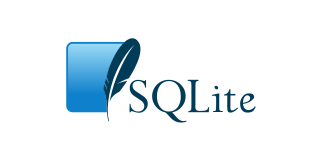編輯:Android開發實例
There are three primary parties involved in the input method framework (IMF) architecture:
In most cases, applications that are using the standard
More finer-grained control is available through the APIs here to directly interact with the IMF and its IME -- either showing or hiding the input area, letting the user pick an input method, etc.
For the rare people amongst us writing their own text editors, you will need to implement
An input method (IME) is implemented as a
See the
There are a lot of security issues associated with input methods, since they essentially have freedom to completely drive the UI and monitor everything the user enters. The Android input method framework also allows arbitrary third party IMEs, so care must be taken to restrict their selection and interactions.
Here are some key points about the security architecture behind the IMF:
On
There may be many client processes of the IMF, but on
Clients of an input method are on
On
An IME can never interact with an
A client application can ask that the system let the user pick a new IME, but can not programmatically switch to on
The user must explicitly enable a new IME in settings before they can switch to it, to confirm with the system that they know about it and want to make it available for use.
譯文:
InputMethodManager:
整個輸入法框架(IMF)結構的核心API,處理應用程序和當前輸入法的交互。可以通過Context.getSystemService()來獲取一個InputMethodManager的實例。
結構概覽:
一個IMF結構中包含三個主要的部分:
input method manager:管理各部分的交互。它是一個客戶端API,存在於各個應用程序的context中,用來溝通管理所有進程間交互的全局系統服務。
input method(IME):實現一個允許用戶生成文本的獨立交互模塊。系統綁定一個當前的輸入法。使其創建和生成,決定輸入法何時隱藏或者顯示它的UI。同一時間只能有一個IME運行。
client application:通過輸入法管理器控制輸入焦點和IME的狀態。一次只能有一個客戶端使用IME。
applications:
大多數情況下,使用標准的TextView或者它的子類的應用很少能很好的使用soft input methods。你需要主要的主要事情如下:
當你的可編輯區域顯示的時候,正確設置inputType,以便於input method能找到足夠的context,這樣input method才能更好的輸入文本。
正確處理輸入法顯示的時候覆蓋的區域。理想情況下,應用應該處理窗口縮小帶來的影響。但是這依賴系統在需要的情況下對窗口重置的操作。你應該在activity中設置windowSoftInputMode屬性或者在創建的窗口設置適當的值,這能幫助系統判斷是否重置大小。系統自動嘗試判斷是否重置大小,但是這可能帶來錯誤。
你也可以通過windowSoftInputMode屬性對你的窗體設置最喜歡的soft input狀態。
你可以通過InputMethodManager這個API來實現更精細的控制。
當你自己謝自己的文本編輯域的時候,你必須實現onCreateInputConnection(EditInfo)來返回一個InputConnection的實例,用來允許IME和你的文本編輯域來交互。
input methods:
一個IME實現為一個Service,典型的是繼承InputMethodService。IME提供核心的InputMethod接口,盡管提供InputMethod通常是由InputMethodService來處理,而IME的實現只需要處理更高層的API。
更多信息參考InputMethodService
Security:
由於輸入法必須有自由去完全掌控UI,和監聽所有用戶輸入,所以這會導致很多安全問題。由於Android輸入法框架允許任何第三方軟件,所以注意限制IME的選中和交互。
以下是IMF背後的安全架構的關鍵點:
只允許系統通過BIND_INPUT_METHOD權限直接訪問IME的InputMethod接口。通過綁定到要求這個權限的服務來強制實現這一點。所以系統可以保證沒有不被信任的客戶端在它的控制之外訪問到當前的輸入法。
IMF框架中有很多客戶端進程,但僅有一個是活動的。不活動的客戶端不能和IMF的鍵部分交互。這是通過下述機制實現的。
輸入法的客戶端只被授予訪問輸入法的InputMethodSession接口的權限。每一個客戶端實現一個InputMethodSession接口的實例。當前IMF只處理和活動activity關聯的那個InputMethodSession。普通IME(繼承自InputMethodService)是通過AbstractInputMethodService強制實現的。但是自定義InputMethodSession實現的IME必須顯示處理這一點。
只有活動的客戶端的InputConnection可以采取操作。IMF判斷每一個客戶端是否活動,強制要求不活動的客戶端調用InputConnection會被忽略。這確保了IME傳遞事件和文本輸入到當前有焦點的UI。
屏幕關閉狀態下IME永遠不能和InputConnection交互。這一點通過使屏幕關閉狀態下所有的客戶端不活動來實現。這一點阻止了有問題的IME在用戶無法看到它的行為情況下操作用戶UI。
客戶端應用程序可以請求選擇一個新的IME,但是不能自己編程切換。這防止了惡意程序切換到自帶的IME,當用戶運行到另一個程序時,這個IME會保持運行。另一方面,IME程序可以編程實現切換到系統的另一個IME,這是因為IME本身已經擁有了用戶輸入的全部控制。
用戶使用新的IME之前,必須顯式地在設置裡面允許一個新的IME。這就是對系統說,我(用戶)已經知道了這個IME,可以用。出了問題用戶負責怪不了系統。
 Android支付寶支付開發實例
Android支付寶支付開發實例
在移動應用滿天飛的時代,隨著移動支付的盛行,很多應用中都集成了支付功能。之前的支付一直不是我負責,近期這個項目我負責訂單模塊少不了要做支付,每每提起
 Android登錄實例
Android登錄實例
登錄應用程序的屏幕,詢問憑據登錄到一些特定的應用。可能需要登錄到Facebook,微博等本章介紹了,如何創建一個登錄界面,以及如何管理安全問題和錯誤嘗試。首先,必須定義兩
 Android MediaPlayer(多媒體播放)
Android MediaPlayer(多媒體播放)
Android提供了許多方法來控制播放的音頻/視頻文件和流。其中該方法是通過一類稱為MediaPlayer。Android是提供MediaPlayer類訪問內置的媒體播放
 Android中操作SQLite數據庫快速入門教程
Android中操作SQLite數據庫快速入門教程
SQLite是Android平台軟件開發中會經常用到的數據庫產品,作為一款輕型數據庫,SQLite的設計目標就是是嵌入式的,而且目前已經在很多嵌入式產品中使用了它